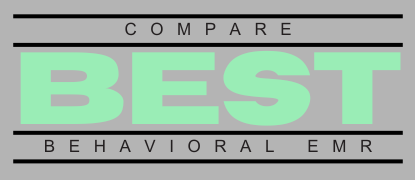
Switching your behavioral health EMR can feel daunting, especially when your practice depends heavily on clinical documentation, billing accuracy, and consistent patient care. But as your practice evolves, your needs inevitably change, and the EMR system that once served you well might now limit your growth and efficiency. Learning how to switch behavioral health EMR systems smoothly can ensure that your clinicians remain productive and that your practice continues to deliver exceptional patient care without disruption.
Why Consider Switching Your Behavioral Health EMR?
If you’re researching how to switch behavioral health EMR solutions, you’re likely experiencing some frustrations. Common pain points driving practices to switch behavioral health software include:
- Limited features or functionality
- Poor integration with other clinical or financial software
- High costs or hidden fees
- Complex user interfaces causing clinician frustration
- Poor vendor support or customer service
Ultimately, the right EMR should streamline your workflow, simplify documentation, and support your clinicians in delivering outstanding patient care. If your current EMR isn’t meeting these goals, it’s time to consider switching.
Step-by-Step Guide to Switching Behavioral Health EMR Systems
Step 1: Evaluate Your Current System and Identify Needs
Before you begin evaluating new EMR options, clearly define what’s working and what’s not in your existing system. Consider your clinicians’ feedback: are they spending too much time on documentation? Are billing errors frequent? Do integrations with other practice management systems pose challenges?
Document your needs clearly, prioritizing must-have features versus nice-to-have features. For additional guidance, check out resources like SAMHSA’s guidelines for behavioral health practices, which can help you identify key requirements.
Step 2: Research and Compare Potential EMR Vendors
Once you’ve outlined your requirements, start researching potential EMR providers. Look for behavioral health-specific EMR platforms that offer customizable documentation tools, client portals, electronic prescribing, telehealth integration, and robust reporting capabilities.
As you compare vendors, keep the following considerations in mind:
- User-friendliness and intuitive user interface
- Integration capabilities with your existing financial, CRM, or practice management tools
- Clear and transparent pricing structure
- Quality of customer support and training resources provided
- Compliance with HIPAA and other regulatory requirements
If you’re unsure of which EMR may best fit your unique needs, consider requesting a free practice analysis to receive expert recommendations tailored to your practice.
Step 3: Develop a Clear Implementation Timeline and Strategy
A smooth EMR switch requires careful planning and communication. Create a detailed implementation timeline, clearly outlining key phases such as data migration, clinician training, system testing, and go-live date. Share this timeline with your entire team to set expectations and minimize confusion.
Your implementation strategy should include the following:
- Assigning internal champions or coordinators to oversee the project
- Scheduling regular check-ins with your EMR vendor to monitor progress
- Allocating sufficient time for thorough staff training before going live
Step 4: Data Migration and Testing
One of the most critical components when you switch behavioral health EMR software is transferring patient data from your old system to your new one. Work closely with your vendor to ensure secure and accurate data migration, complying with patient privacy laws and regulations.
Before going live, set aside time to thoroughly test the new EMR system. Include a variety of scenarios like scheduling appointments, documenting clinical notes, and processing billing to ensure your new system meets your requirements and expectations.
Step 5: Staff Training and Support
Proper staff training is essential to minimize disruptions and ensure a successful transition. Arrange comprehensive training sessions tailored to the specific roles of your clinicians and administrative staff. Provide ongoing support resources, including user guides, online tutorials, and direct vendor support channels.
Consider creating internal “super-users” who can assist peers and provide quick troubleshooting during and after the transition.
Step 6: Go-Live and Post-Implementation Evaluation
When you’re ready to make the switch, choose an optimal period with minimal patient load to reduce stress and disruptions. Communicate the go-live date clearly to your staff and patients, and ensure extra support is available during this transition period.
After your new behavioral health EMR system is live, continue to evaluate its performance regularly. Gather feedback from your team, identify any lingering issues, and work closely with your vendor to make necessary adjustments.
Common Pitfalls to Avoid When Switching Behavioral Health EMR Systems
Knowing common mistakes can help you avoid them. Watch out for these pitfalls:
- Insufficient staff training leading to prolonged adjustment periods
- Rushed data migration resulting in lost or inaccurate patient information
- Poor communication about the transition timeline and expectations
- Lack of vendor support resulting in unresolved technical issues
Conclusion: Seamlessly Transition to a Better EMR Solution
While switching behavioral health EMR systems is no small feat, careful planning and execution can make the process smooth and beneficial. By clearly identifying your practice’s needs, thoroughly researching vendors, developing a detailed implementation strategy, and providing robust staff training, you can switch behavioral health EMR systems without disrupting your practice’s productivity.
If you’re exploring new EMR solutions but aren’t sure where to start, take advantage of our free practice analysis. Our EMR experts will evaluate your unique practice needs and offer personalized recommendations to help you find the perfect EMR solution.
